Prickly acacia
Vachellia nilotica, Fam. Mimosaceae
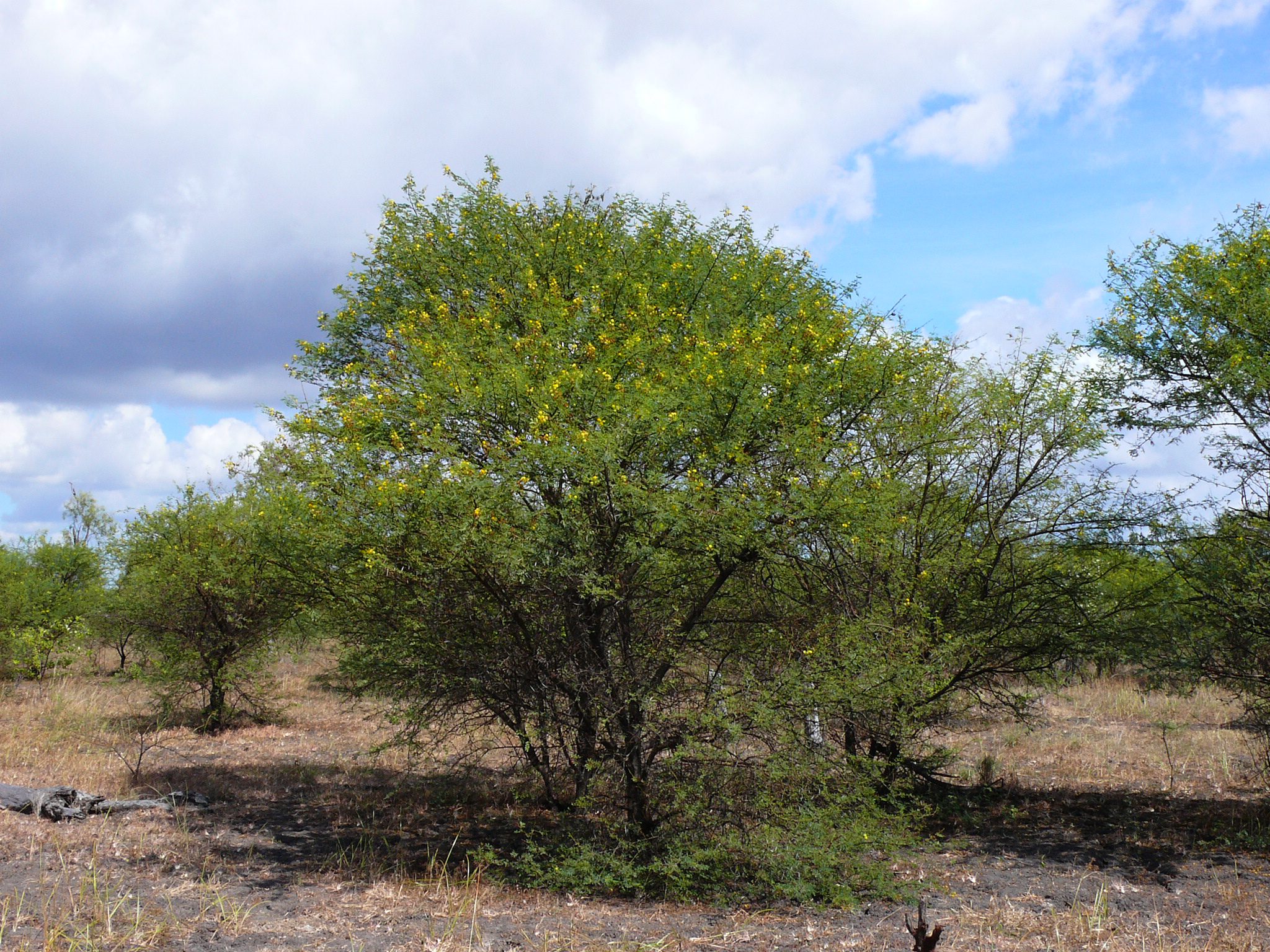
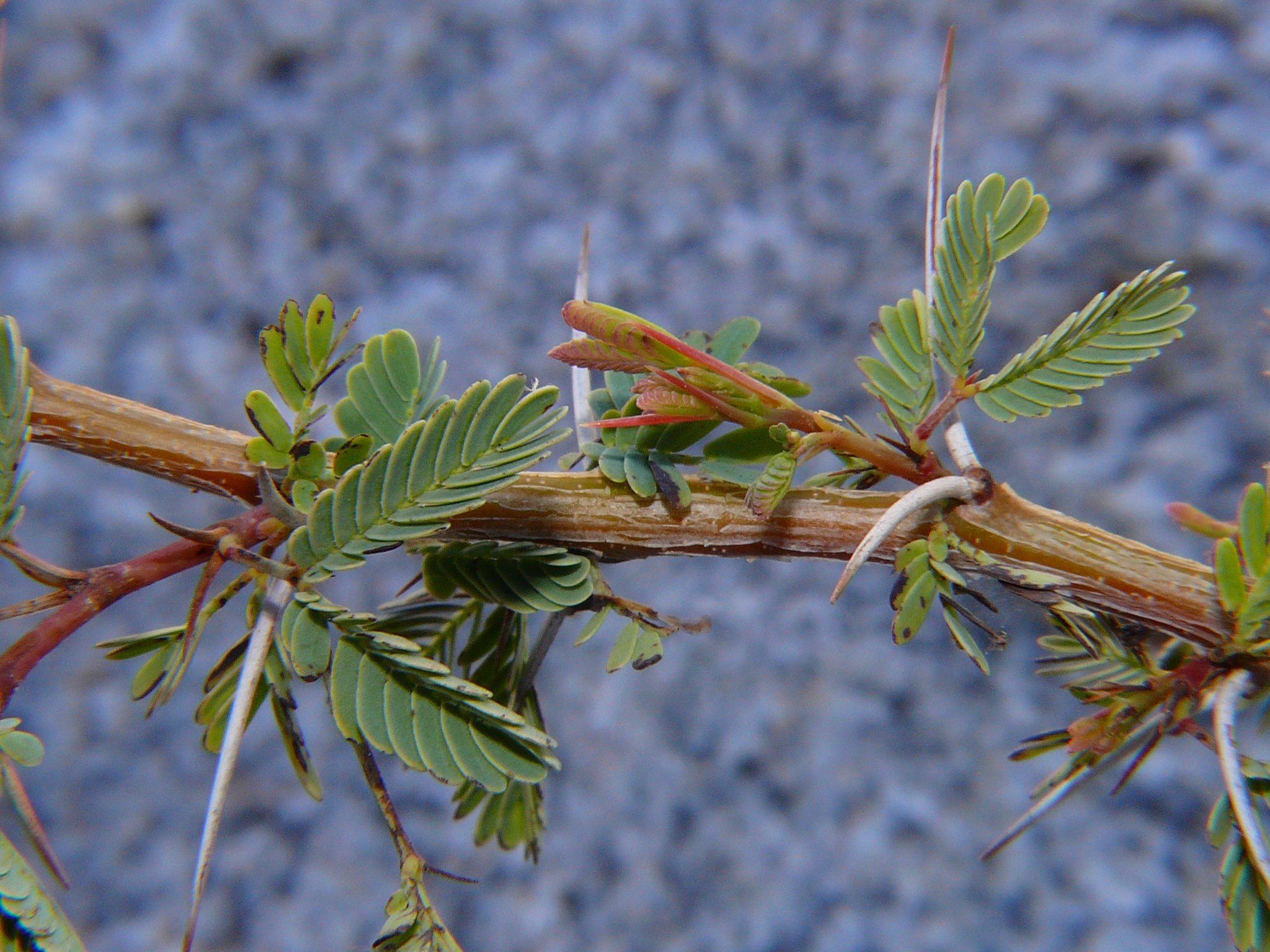
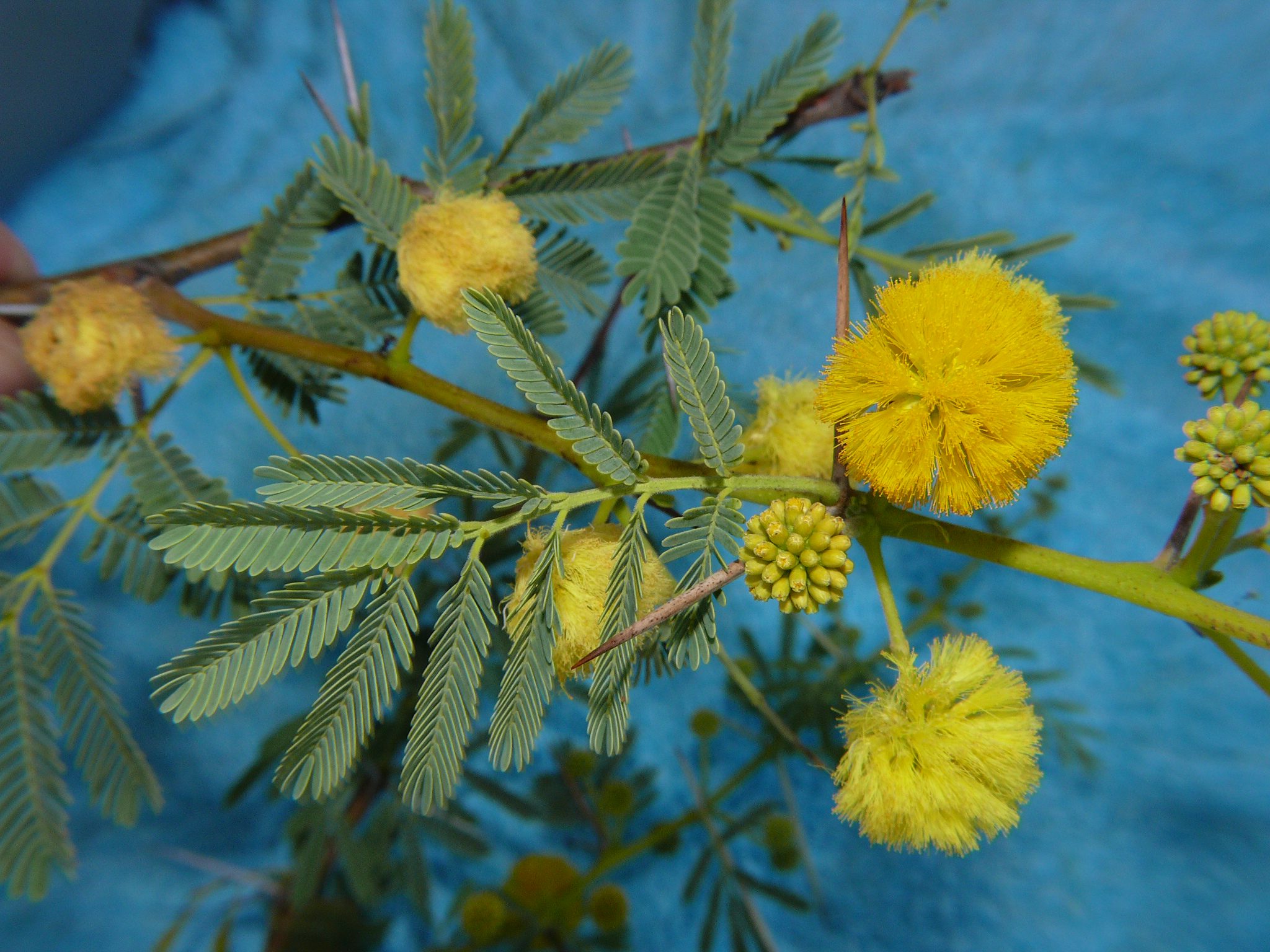
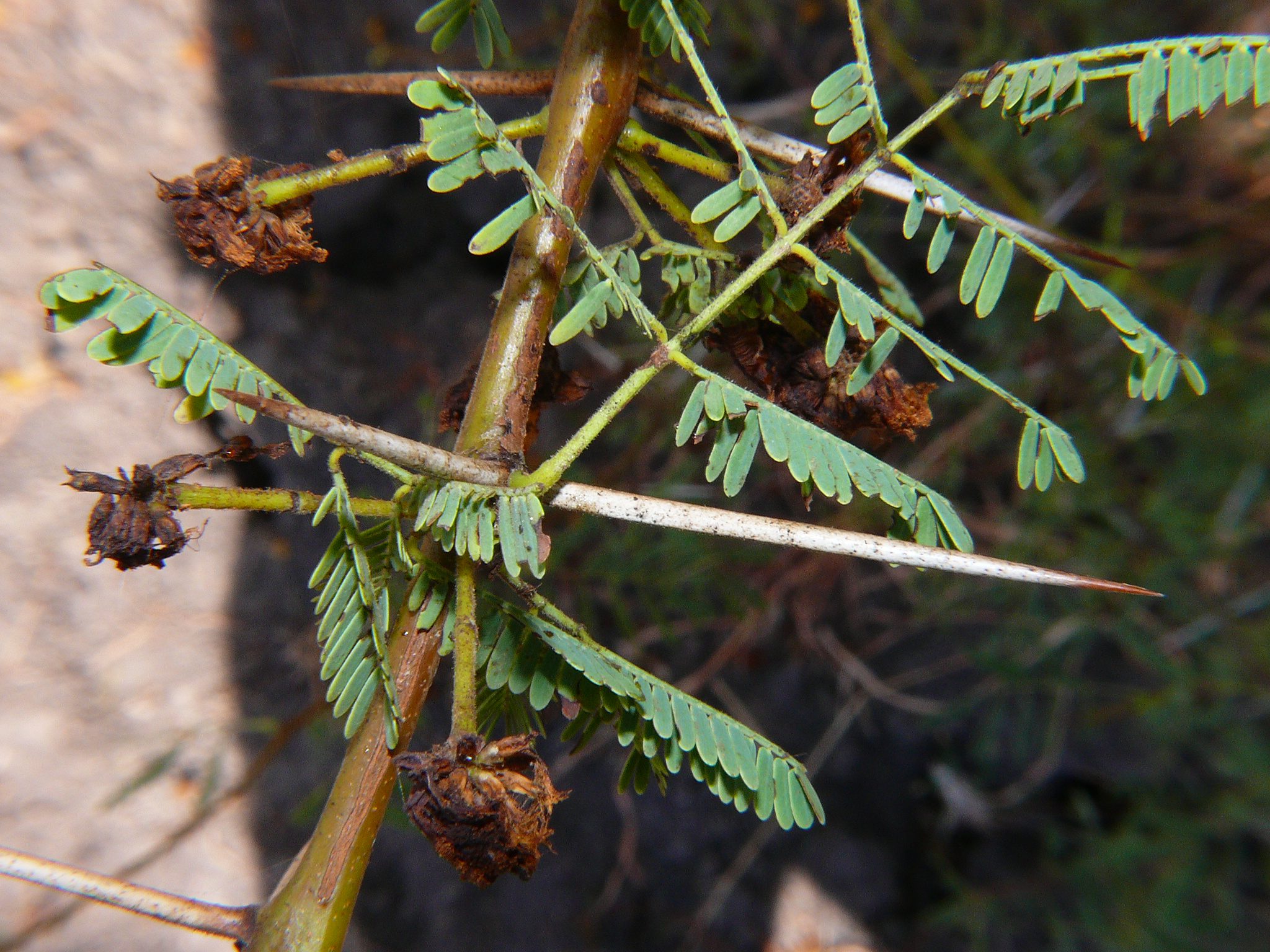
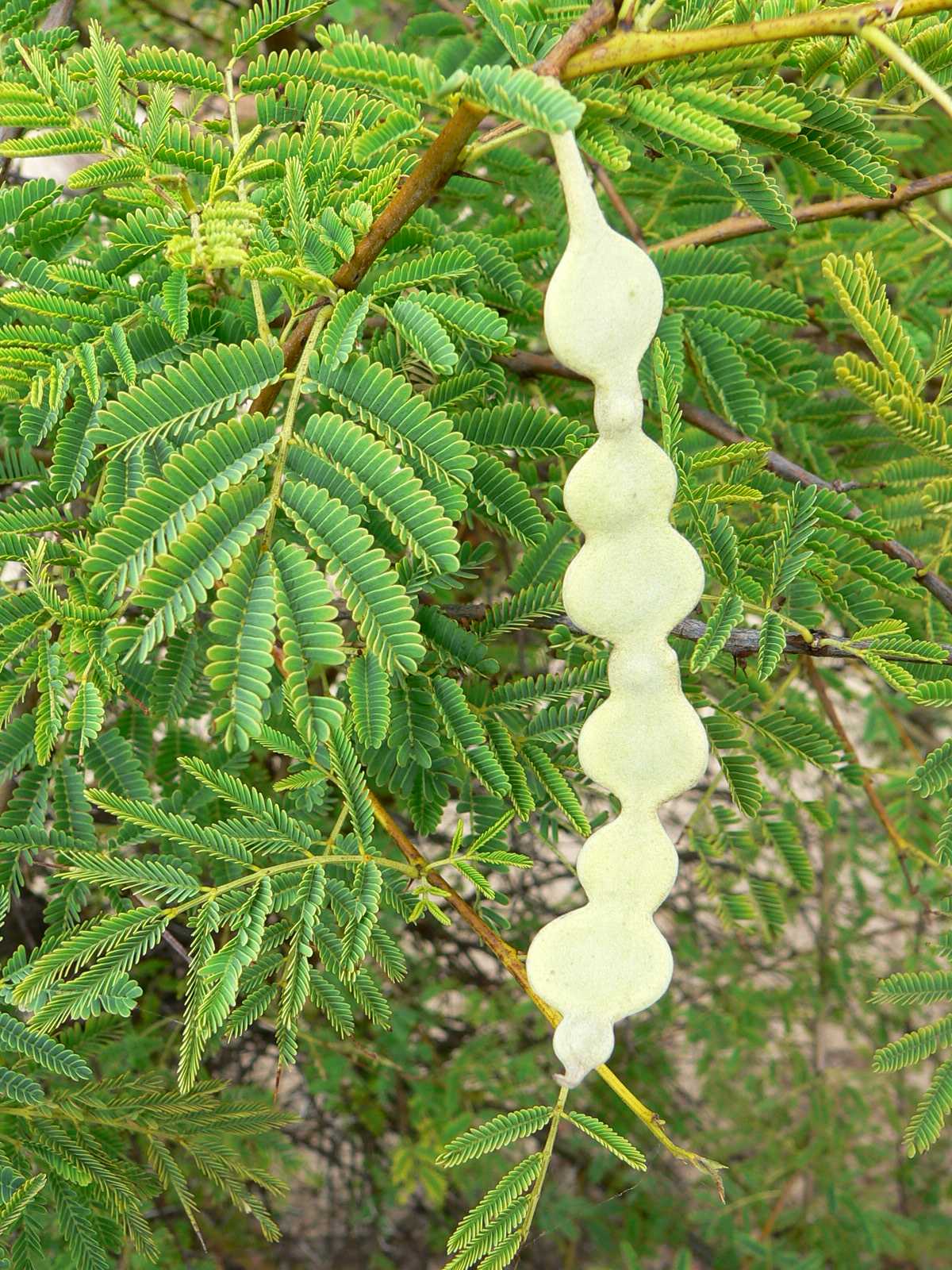





A shrub to spreading tree to 10m tall with axillary spines up to 50mm long. Previously Acacia nilotica subsp. indica.
| Weed Category: |
Restricted invasive plants Category 3 Plants declared invasive under the Biosecurity Act 2014, that are present in QLD.
Not to be distributed or disposed of.
|
| Weed: | Yes |
| Form or habit: | Shrub, Small tree |
| Family: | Mimosaceae |
| Leaf: | Compound Opposite Compound, opposite, bipinnate, fern-like with 4-10 pairs of pinnae each with 10-25 pairs of leaflets. |
| Flower conspicuous: | Conspicuous |
| Flower colour: |
Yellow |
| Flower description: | Yellow, in fluffy spherical heads, typical wattle. |
| Fruit conspicuous: | Conspicuous |
| Fruit colour: |
Grey, Green |
| Fruit: | Dry |
| Fruit description: | Pods 100-150mm long, green-grey and downy, flat, deeply indented like a necklace around the 8-15 seeds. Seeds flattened, greyish, oval, with a very long viability. |
| Habitat: | |
| Distribution | |
| Food source for: | |
| Toxicity: | No toxicity known |
| Origin: | Pakistan, Africa, Middle East and south west Asia |
| Notes: | Spread by: seeds germinate in large numbers under the parent plant, dispersed by water, in animal manure (e.g. cattle) and by contaminated soil on/in vehicles and machinery. Originally introduced as a fodder tree and also planted for shade. Leaves and pods high in protein. Invades/threats: drier areas of the region where it replaces remnant vegetation, forms thorny thickets which outcompete grassland species and restrict mustering, vehicle and wildlife movement. Grows on heavy clay soils. Category 3 restricted invasive plant under the Biosecurity Act 2014, it must not be given away, sold, or released into the environment without a permit. The Act requires everyone to take all reasonable and practical steps to minimise the risks associated with invasive plants and animals under their control. This is called a general biosecurity obligation (GBO). |
| Information sources: | Mackay Regional Pest Management Group (2018) Weeds of the Mackay Whitsunday Region Second Edition. |